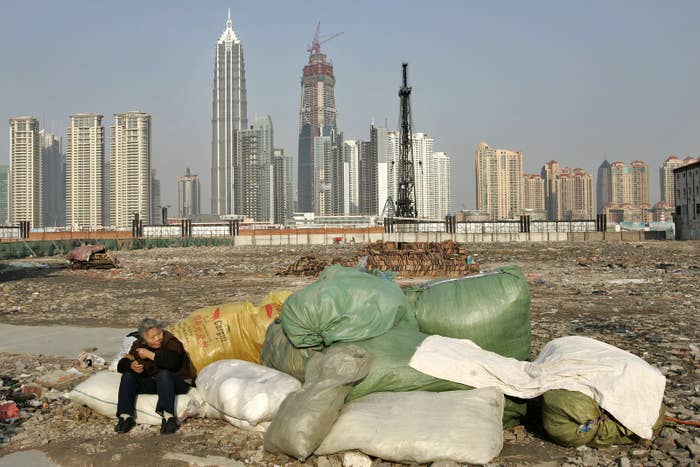
In 2010, Oxfam calculated that the world had become so unequal that the 388 richest people together owned as much as the poorest 50% of the planet’s population.
By 2015, this was no longer the case. According to the charity's latest research, published on Monday, just 62 individuals now have the equivalent combined wealth of the world’s poorest 50% – that’s 3.6 billion people. Here's what that looks like:
This increasing concentration of wealth is just the most startling aspect of a much wider global wealth gap revealed by the new research. Between 2000 and 2015, the world got $133 trillion wealthier – equivalent to about an extra $19,000 for each person on the planet.
But the wealthiest 1% took $68 trillion of this increase – almost half – for themselves, an average of $762,700 each. The rest of the top 10% took another $48 trillion, for an average of $72,600 each. The remaining 90% of the world's population were left with just $17 trillion between more than 6 billion people.
Referring to "the global 1%" raises in many heads the idea of speedboats, mansions on three continents, and a swarm of butlers. The reality is very different – which you can see for yourself below. Our tool asks for your income (what you earn each year), rather than your wealth (the total value of everything you earn), but does serve to show you where you sit compared to the rest of the world.
Perhaps surprisingly, an annual income of just $1,184 is higher than half of the people in the world, while $23,649 would put you in the top 10%. And when we're referring to the world's top 1% of income earners, we're referring to people on $49,819 or more each year (that's around £34,800 or €45,500). That's a pretty comfortable income, but it's a long way away from helicopter and caviar territory.
According to some measures, global inequality is falling, and it's also true that extreme poverty has dropped dramatically in the last two decades. But Oxfam argue that even if the richest and poorest got the same rise of (for example) 5%, that's still not fair.
It points out that a 5% rise on an annual income of $100 is a mere extra $5 while the same rise on $1 million is a much sweeter $50,000. Using the latest available global statistics, which run to 2011, the charity calculated the world got a collective pay rise of $12.7 trillion. Here's how that pie was sliced.
In short, between 1988 and 2011, the poorest 10% of the planet got a $65 payrise, while the richest 10% got $3,278 each.
Oxfam has released its research to coincide with the World Economic Forum at Davos, a gathering of the world's top politicians and business leaders. The UK-based charity is urging politicians – including British prime minister David Cameron – to do more to tackle offshore havens, which it says perpetuate the global wealth gap: It estimates super-rich individuals have $7.6 trillion in havens, depriving governments across the world of billions in tax revenue.
"It is simply unacceptable that the poorest half of the world population owns no more than a small group of the global super-rich – so few, you could fit them all on a single coach," said Oxfam CEO Mark Goldring
"We need to end the era of tax havens which has allowed rich individuals and multinational companies to avoid their responsibilities to society by hiding ever increasing amounts of money offshore.
"Tackling the veil of secrecy surrounding the UK’s network of tax havens would be a big step towards ending extreme inequality. Three years after he made his promise to make tax dodgers ‘wake up and smell the coffee’, it is time for David Cameron to deliver."

